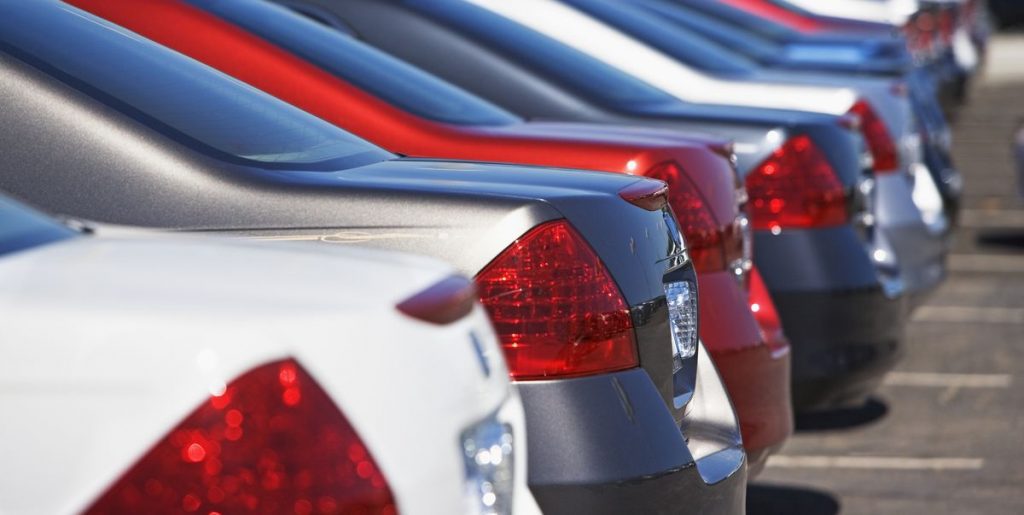How Trading In a Car Works

When you buy a used or new vehicle through a dealership, you might think about trading in your old car. But a lot of times, people aren’t sure how much their vehicles are really worth. If you think about taking your car to the dealer, the first thing you need to do is figure out how much your car is worth.
After you determine the value of your vehicle, it’s time to take it to the dealership and shop for a new car. The dealer will negotiate a price that includes the value of your trade-in, and you can determine if trading in your vehicle is the right choice. If you agree to their price, the dealer then deducts the value of your trade-in from the price of your new car.
Trading in your vehicle is much simpler than trying to sell the car on your own. You can think of a dealership as a one-stop shop for buying and selling a car. You can drop off your old car and take home a new one on the same day, which takes the work out of selling or getting rid of a vehicle you don’t want anymore.
While trading in a car is a simple process, you still have a few things to consider before you follow through with it. Here’s how trading in a car works.
The Process of Trading In a Car
Before you can make a decision, you need to understand the process of trading in your previous car in exchange for a new vehicle. When you know what to expect, you can make the best financial decision for your family.
Determine the Value of Your Trade-In
One of the biggest factors involved in your decision to trade in your car will be its value. You want to know how much you can expect to get from the dealership, as well as what you should expect if you decide to sell the vehicle to a third party.
If you’ve paid off your car, you’ll easily be able to look up its value. However, the trade-in value of your car will be lower if you have negative equity in the vehicle.
Gather Information about Your Trade-In
Next, gather the information the dealership will need about your car. This includes loan information, like your account number and pay-off amount, vehicle registration, proof of insurance, and the amount you’d like to receive for your vehicle.
Shop for a Car and Negotiate
When you arrive at the dealership, you’ll first test-drive a new or used car and choose the one you’d like to buy. You’ll get information about how much the car costs and negotiate the price. Once you agree on a price, tell the dealer that you’re interested in trading in your car. This allows you to negotiate a price without the dealer factoring in your trade-in ahead of time.
When you’re in the office with the dealer discussing the different values, make sure you keep your own notes. Track the figures independently and do your own math. Understand exactly where each figure comes from to avoid surprises at the end of your transaction.
Let the Dealer Assess Your Vehicle
Once you choose a vehicle you want to buy, the dealership will assess the vehicle with an inspection. The inspection will also involve a test drive of your car to ensure that it runs well.
Finalize the Transaction
Once the value of your trade-in is factored in, you’ll finalize the deal by signing paperwork. Make sure to read everything carefully, looking for any add-ons or extra features you didn’t want to include in your agreement. You can then clean out your car, hand over the keys, and take home your new vehicle.
Why Should You Use a Trade-In to Buy a New Car?
Several advantages can make trading in your used vehicle the best choice when you buy a new car. For example, trading in your vehicle can make your new car more affordable.
Maybe you want to buy a new car that costs $30,000, and you plan to trade in a car that the dealership will give you $10,000 for. If you trade in the car, you knock down the price of your new car to just $20,000.
If you trade in your car, you can still choose to pay in cash or finance your vehicle. In the example above, you would need to finance just $20,000 because of your trade-in value. This means that you can lower the monthly payment of your new loan.
One thing many people don’t know is that a trade-in will also shave off some sales tax. When you trade in a car, you pay sales tax only on the difference. For instance, you’d be taxed on $30,000 in the example above, but trading in a $10,000 car means that you only have to pay sales tax on $20,000. As a result, you can save hundreds of dollars on the new car.
How Do You Know the Value of Your Trade-In?
Before you trade in your car, you should know the trade-in value so that you can negotiate with the dealer and avoid making a deal that’s unfair to you. Many people determine the value of their car based on the Kelley Blue Book value, but you may want to use several guides to get the full scope of its value.
No matter the trade-in value of the car, you should note that you aren’t likely to get the full value of your car when you trade it to a dealer. Keep in mind that the dealer will likely resell the car for a profit, so the figure you see on your trade-in value may be somewhat lower than your expectations.
What Factors Does a Dealer Consider When You Trade In a Car?
The dealership will consider several factors before you’re given an offer. You’ll find that supply and demand determine which cars the dealership will accept. If you don’t get a good quote the first time, you might try again later. The dealership might look at the:
Vehicle typeVehicle ageMileagePositive or negative equityNumber of ownersVehicle conditionAdd-ons and special featuresSeasonal demand
What If the Trade-In Offer Is Too Low?
If the dealership offers you a figure you believe is too low, you can choose to sell your car to a private buyer. You can determine the car’s worth on your own, giving you more control over how much money you accept for it. You’re likely to get more money than at the dealership.
Can You Trade In a Car If You Still Owe Money?
If you owe money on your car loan, you can still use it as a trade-in. You’ll still need to pay off the car loan, however. This can happen in a few different ways. In some cases, car dealers will agree to pay off the loan. If you have positive equity in the car, this could benefit you.
If you have negative equity in your car, this means that the vehicle is worth less than what you owe on the car loan. In this case, trading in your vehicle may not be the best option from a financial standpoint. In some cases, the car dealership will add the remaining balance to your new loan. This means you may see your monthly payment increase.
This is why so many people prefer to wait to sell or trade until they no longer owe money on the car loan. If you want to do this, you’ll need to make some extra payments on your loan, including making principal-only payments.
Is Trading In a Car a Good Idea?
In many situations, trading in a car can be a great option. Trading your vehicle in to a dealer is less time-consuming than trying to sell your car to a private party. You can complete the entire process, from the appraisal to signing paperwork, at one time. You arrive in one car and leave in another, in less than a couple of hours in many situations.
You can easily pay off an existing loan and roll over any extra debt to your new loan. Even if you owe money on your old car, you have options for paying off your vehicle that doesn’t require you to contact the financial institution or make extra payments. That means you have to deal with less paperwork and still get improved loan terms and perhaps lower monthly payments.
If you owe more money on the car than it’s worth, you may want to pay off your current auto loan before you trade it in. This could be the better option if you don’t want to add your existing loan to the new car loan.
What If You Don’t Want to Trade In Your Car?
While trading in a car can be a great option for many people, there are some disadvantages as well. For example, you may not receive as much money as you’d like. If you’re willing to put the time and effort into getting the most value for your car, you may find that it’s a better idea to sell your car to a third party.
If you don’t want to trade in your car, you do have plenty of other options. For example, you can donate your car to a charity, sell it to a private party, or seek out another dealership that may offer more money for your car.
Do You Need to Prepare Your Car for a Trade-In?
You don’t need to do anything special to prepare your car for the trade-in process, but some steps can improve its value. For example, you may want to replace the tires, replace the brakes, vacuum, and get a car wash to show off your car in its best light. You should also make sure that you have a clean title with no tickets to pay. It’s also wise to wipe out all your information from the car’s technology. Remove your home from the navigation system and unpair your phone from the radio.
For many people, the process of trading in a car is simple and fast. While you may get less money than you would by selling your car, the convenience is often worth it.
Elizabeth Rivelli is a freelance writer with more than three years of experience covering personal finance and insurance. She has extensive knowledge of various insurance lines, including car insurance and property insurance. Her byline has appeared in dozens of online finance publications, like The Balance, Investopedia, Reviews.com, Forbes, and Bankrate.





